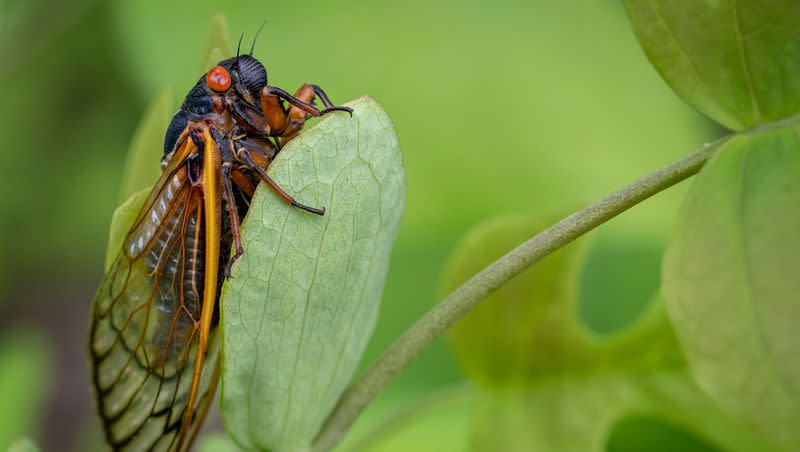Cicadas will emerge together for the first time in over 200 years

- Oops!Something went wrong.Please try again later.
It’s going to be a big year for the cicada population.
According to Newsweek, two broods — or populations — of cicadas, labeled as Brood XIII and Brood XIX, will co-emerge from the ground in 2024 for the first time in 221 years. The groups rarely overlap, since XIX appears every 13 years and XIII appears every 17 years.
For the first time in 221 years, Broods XIII and XIX of periodical cicadas are emerging simultaneously, overlapping in Illinois. Read the article to l... #Science #STEM #ArtificialIntelligence #Astrophysics #ClimateChange
https://t.co/RoMVINndhk— ScienceTimes (@ScienceTimesCom) January 16, 2024
The last recorded occurrence of these cicadas simultaneously emerging was in 1803, when the Louisiana Purchase was made, and the third U.S. president, Thomas Jefferson, was still in office, per Business Insider.
The next occurrence of this ultra-rare event won’t happen until 2445, according to ScienceAlert. And there won’t be a coemergence of any two broods for another 13 years, per the University of Connecticut.
Where and when the cicadas emerge
NewsNation reports that these cicadas will appear between the middle of May and the end of June. Both broods will be seen in select areas in the states of Indiana and Illinois, and Brood XIX will also appear in the following states:
Alabama.
Arkansas.
Georgia.
Kentucky.
Louisiana.
Missouri.
Mississippi.
North Carolina.
Oklahoma.
South Carolina.
Tennessee.
Virginia.
Views of cicadas in recent memory
Cicada enthusiasts are looking forward to visiting Illinois, in particular, to see the cicada broods overlapping.
Gene Kritsky, a professor at Mount St. Joseph University and an expert on cicadas, told Business Insider that he is excited to capture the phenomenon since he’s been mapping out cicadas “since 1976” and even created a crowdsourcing app called “Cicada Safari” to collect photos of the insects for the purposes of scientific research.
While the event of two cicada broods emerging simultaneously is rare, individual broods of cicadas appear from the soil regularly. Those who live in specific parts of Ohio, for example, witnessed the insects appear in the eastern half and southwestern side of the state, in 2016 and 2021, respectively, per Mansfield News Journal.
What are cicadas and what do they do?
Cicadas, as explained by Mansfield News Journal, are “winged insects with red eyes that spend most of their lives underground.”
Cicadas, also referred to as “heat bugs,” belong in the same family group as leafhoppers and aphids, yet they are not grasshoppers or locusts — as they’re often mistaken to be, according to Today.
They spend the majority of their lives, according to ScienceAlert, “as nymphs, feeding on tree root sap.”
However, during the summer months, the broods will appear from the ground to “shed their exoskeletons as they transform from wingless nymphs into adults, leaving behind husks that may blanket trees and ground areas.”
Are they dangerous or harmful?
While it can be scary to see thousands — if not millions — of cicadas appearing near your house, the insects are relatively harmless.
As Business Insider noted, cicadas do make a loud noise and can even hurt budding trees in an attempt to plant their eggs. Otherwise, they do not harm anyone.
Related

